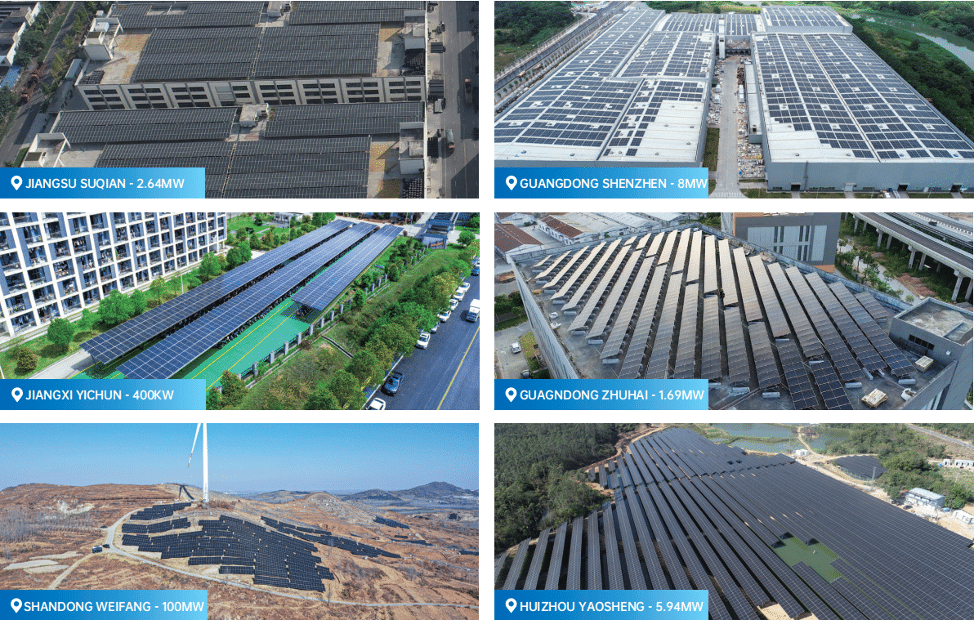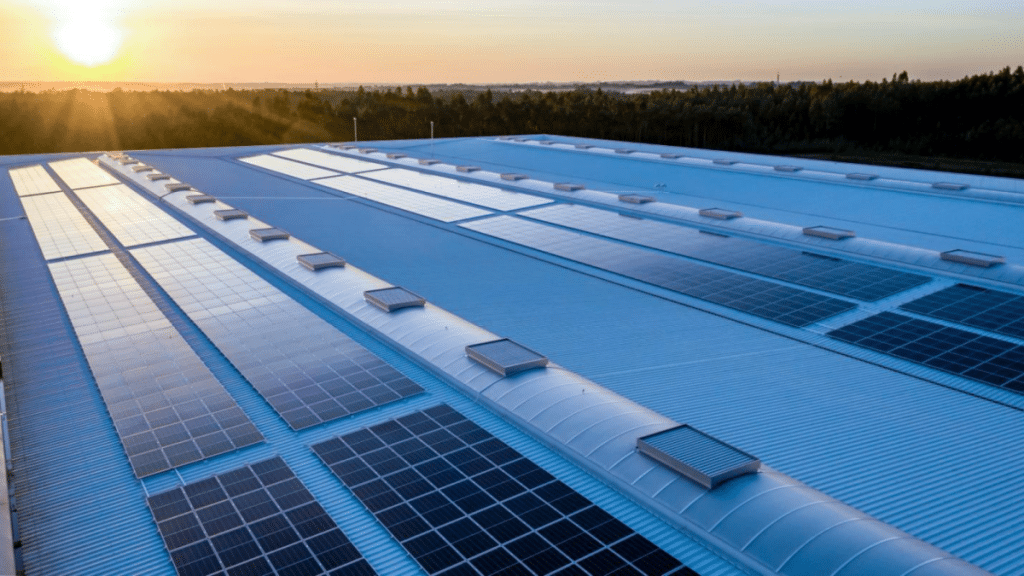Solar PV systems have marched across the globe with enormous benefits. The tense energy trends and environmental pressures are driving more people to this new renewable power generation. Among diverse solar PV systems, commercial solar system installations play a significant role in supporting global efforts towards the green energy transition. This article will help you understand the concept, working, and benefits of a commercial solar system.
FAQs about Commercial Solar Systems
FAQ 1: What is a Commercial Solar System?
Commercial and industrial (C&I) solar systems are photovoltaic (PV) installations designed to meet the energy needs of businesses and non-residential organizations such as shopping centers, hotels, warehouses, office buildings, and educational institutes. A commercial solar system converts solar energy into electrical energy, allowing businesses to meet their energy needs, cut down operational costs, and enhance their sustainability profiles.
Unlike residential solar systems, commercial PV systems are typically larger and can generate several megawatts (MW) of energy. They can be installed on the rooftop of a building, on the ground adjacent to a facility, or as solar carports over parking lots, offering shade while producing electricity.
Their practicality has led to a widespread application. It is anticipated with new C&I system installations of 8GW/19GWh in 2024 from a global perspective. [1]
FAQ 2: How Does a Commercial Solar System Work?
A commercial solar system operates by converting sunlight into electricity using photovoltaic (PV) panels. Here is a step-by-step guide on how the system works:
1. Solar Panel Installation:
Solar panels are installed on rooftops, ground areas, or as solar carports to capture sunlight. The photovoltaic panels in a commercial solar system are made of semiconductor materials like silicon, encased in glass with protective film, and supported by metal frames. To maximize efficiency, they are strategically positioned. Specifically, commercial PV systems on office rooftops are usually installed southward or east-west with a slight tilt for optimal sunlight capture.

2. Electricity Production:
Each solar cell in a photovoltaic (PV) panel consists of a semiconductor wafer, which is typically made from silicon. The silicon wafer is doped to create two distinct regions: the N-type (n-type) region, which has an excess of free electrons and is negatively charged, and the P-type (p-type) region, which lacks electrons and is positively charged. The junction where these two meet is known as the P-N junction, and it generates an electric field.
When sunlight strikes the photovoltaic cell, the energy from the photons can excite electrons in the silicon. These free electrons are then driven by the electric field to move toward the N-type region, while the holes (the absence of electrons) move toward the P-type region. The flow of electrons, therefore, generates an electric current, which is known as the photovoltaic effect.
3. Energy Conversion:
The electricity generated by the photovoltaic effect is direct current (DC) electricity. Given that most electrical systems operate on alternating current (AC), an inverter will be used to fulfill the power conversion. The surplus power can be stored in the energy storage system for later use.
4. Power Distribution:
The AC electricity is then delivered to power the facility’s operations. Often, commercial solar panels can be connected to the electrical grid, allowing excess electricity to be fed back into the grid. This allows a business to receive credits or reduce future energy bills.
FAQ 3: How Much Does a Commercial Solar Power System Cost?
The cost of a commercial solar power system varies widely based on several factors, including the size of the installation, the type of system, and specific project requirements. For instance, the typical expense of a solar power system can be $2-$5 per watt in general. If you need a specific number, contact the solar brand you would like to cooperate with directly, and you will get every detail you need.
FAQ 4: What are the Solar Benefits of Investing in Commercial PV Systems?
Investing in commercial photovoltaic (PV) systems offers attractive benefits. Some of them include:
- Energy Independence & Security: Gaining power from a commercial solar system means the business can be less dependent on utility providers. Especially during unexpected power outages, having a solar system means an uninterrupted power supply.
- Energy Cost Savings: Less dependence on grid power also contributes to less spending on utility bills. The larger the scale is, the more savings can be made.
- Financial Incentives & Tax Credits: Due to their huge significance, governments can impose different policies to encourage C&I system installations. They can effectively shorten the ROI process and make solar investment more worthwhile.
FAQ 5: What are the Common Difficulties in Commercial & Industrial Power Station Development?
After talking about the benefits, the potential challenges should be taken into account, as well.
1. Complexity in Station Establishment:
Establishing a solar power station involves intricate procedures, a complex environment, and the challenge of stringent construction supervision.
2. Quality Concerns:
The industry faces downward pressure on costs, leading to inconsistent design quality and diverse acceptance standards for solar power stations.
3. Reduced Earnings:
Profits are often concentrated in middlemen, leaving property owners with lower returns and a lack of standardized revenue models.
4. Operational Insecurity:
The long operational lifecycle of solar power stations is subject to numerous influencing factors, and the cost of post-sale communication and support is high.
To combat all the possible problems mentioned above, you should choose a reliable solar brand for smooth collaboration.
Build Leading Commercial PV Systems with Solavita
Solavita specializes in designing high-performing residential and commercial solar systems tailored to diverse scenarios. Some examples include colored steel tile roofs, concrete roofs, and car shed roofs. This is a rather competitive solar brand due to the following strengths:
1. One-stop Services
The Solavita brand excels in developing customized solutions and manages everything from design, consultation, and equipment procurement to operation and maintenance.
2. Comprehensive Product Range
With 200+ technical team members and strong manufacturing capacities, Solavita offers top-rated solar products, from diverse solar PV modules to quality energy storage systems.
3. Mature Project Experience
The brand has experience in handling commercial photovoltaic (PV) projects from 400 kW to 100 MW. Some of them are:

- GuangDong ShenZhen Skywell 8MW PV Project featuring a colored steel tile roof installation (covering a total panel installation area of approximately 75,000 square feet)
- Jiangsu Yichun Skyworth 2.4MW PV Project tailored for car sheds and concrete roofs:
- Senegal BRT Station 1MW/3MWH PV Project with 21 power stations in total
Conclusion
Utilizing a commercial solar system can be enormously helpful in saving energy bills and contributing to the green goal. The key for a business to benefit most is to choose a reliable solar manufacturer that helps reduce costs with premium products and comprehensive services. If you are interested in what Solavita offers, you may click here to contact them for the latest information!
Reference Links:
[1] Energy Trend/2024, “173GWh! Projections for Global Energy Storage Installations in 2024 Spotlight C&I ESS Advancements”. Available at: https://www.energytrend.com/research/20240403-46277.html (Accessed on 13th June, 2024)
